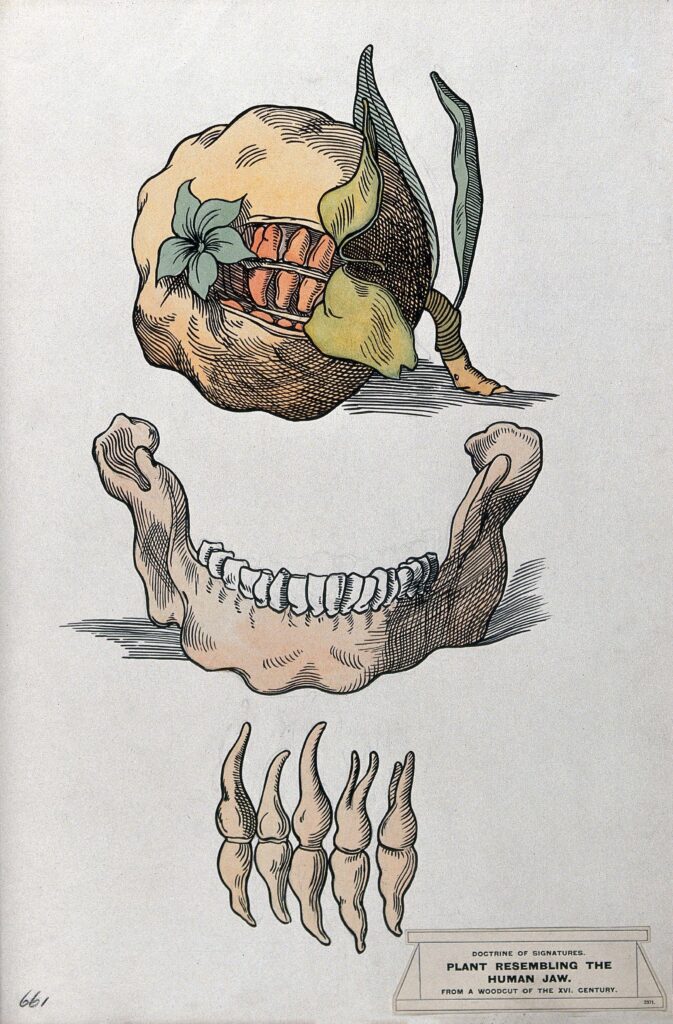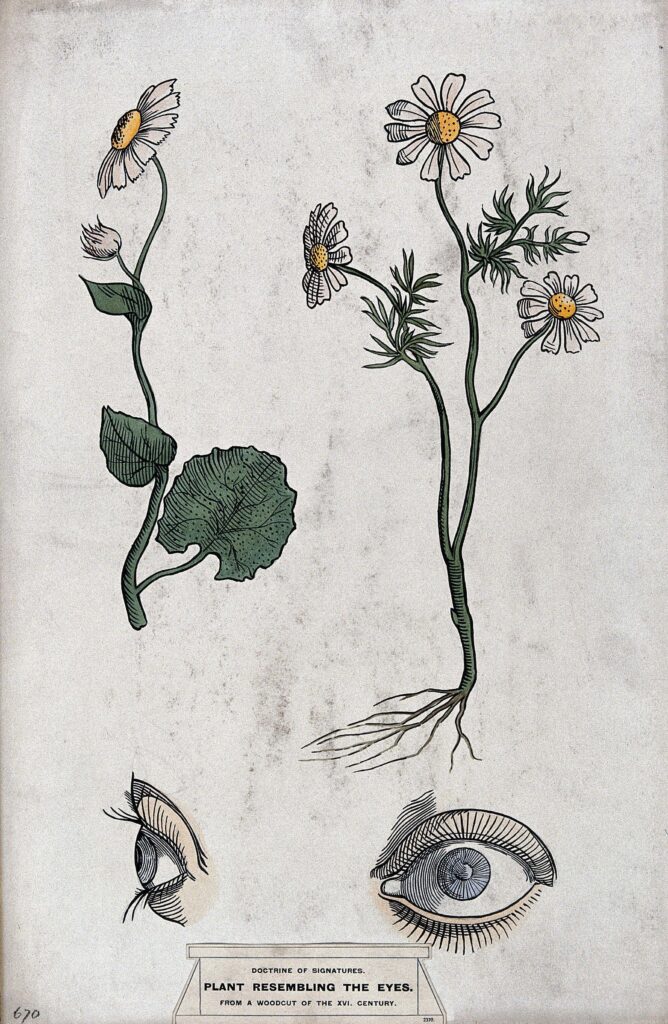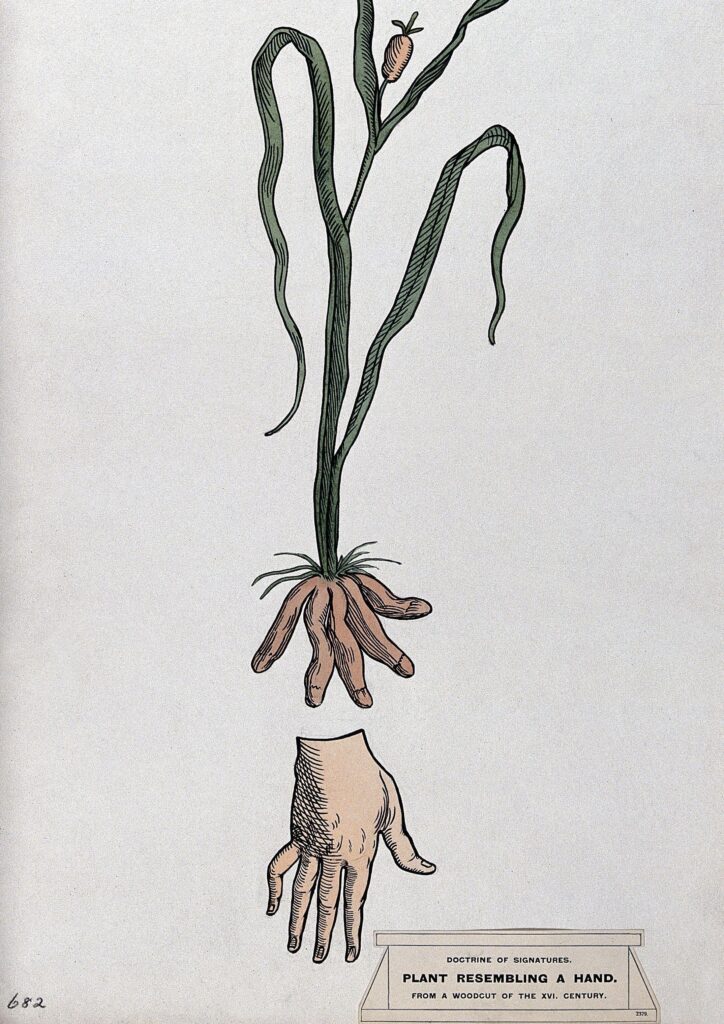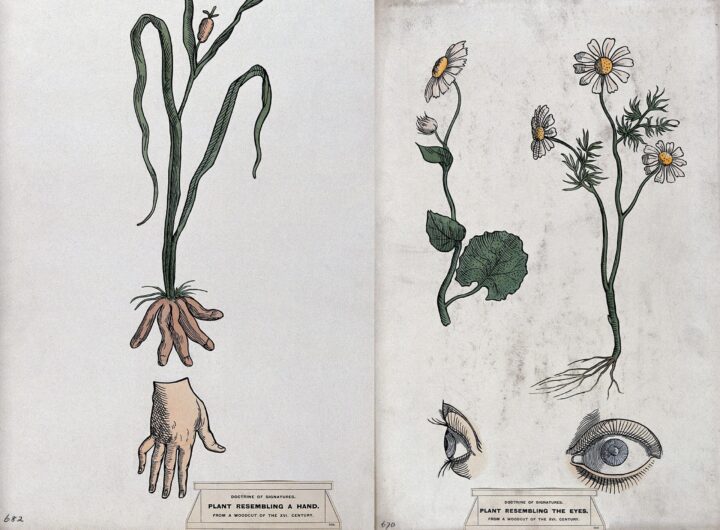Before modern medicine, doctors believed that if a diseased part of the body resembled a certain plant, then that plant could treat issues related to that body part. This idea is known as the Doctrine of Signatures.
The concept of healing through this doctrine dates back to the ancient Greek physicians Dioscorides and Galen. During this era, it was believed that herbs resembling the shapes or colours of various body parts could treat specific ailments. The idea was straightforward: beans are good for the kidneys because their shape is similar to that of the kidneys.
In the medieval period, there was a widespread belief that God intentionally marked plants with visual clues. It was believed that God created these signatures in leaves, flowers, roots, or juice to help cure human ailments.
William Coles stated in his work Nature’s Paradise, or Adam in Eden (1684), “Though Sin and Sathan have plunged mankind into an Ocean of Infirmities, yet the mercy of God which is over all his works, makes Grass to grow upon the Mountains, and Herbs for use of man, and has not only stamped upon them a distinct form, but also given particular Signatures, whereby man can read, even in legible characters, the use of them.“
EXAMPLES OF SOME INTERESTING TREATMENTS
Some popular examples include walnuts, which were recommended for brain diseases because of their resemblance to the human brain. Sliced mushrooms resembling the human ear are believed to be ideal for treating earaches. The fruit of a pomegranate resembles a human jaw and teeth, making it a perfect remedy for toothaches.
The autumn crocus (meadow saffron) has a bulb that resembles a gouty toe, leading to its use as a remedy for gout. Heart’s ease flowers (wild pansy) were thought to resemble the upper lobes of the heart, making them a popular herb for treating heart issues.
However, some associations require creative thinking. For instance, the spots on the leaves of lungwort resemble diseased lung tissue, suggesting that this herb may be beneficial for lung problems. Liverwort, with its liver-shaped leaves, is used for liver ailments.

DOCTRINE OF SIGNATURES WAS PRACTISED WORLDWIDE
This concept is not limited to Europe. Indian Ayurveda and Traditional Chinese Medicine (TCM) have also developed systems based on signatures. The first emperor of ancient China, Shennong (3500-2600 BC), known as the father of TCM, recognised that a pleasurable sensation occurred after chewing ginseng. He recommended this root as a sexual stimulant and for the treatment of erectile dysfunction.
Medieval and Ottoman physicians brought the doctrine of signatures from Europe to the Levant, where it was further practiced. Substances such as common Snapdragon, Coral Peony, Orchid, Red Horned Poppy, Rhubarb, and Rose of Jericho were used for medicinal purposes. Similarly, symbolism has a long history in Africa. Historically, Africans have used plants and animals as medicine, often consulting traditional healers instead of doctors.

SO, DID IT ACTUALLY WORK?
Well, the outcomes were varied. We know that some treatments have worked accidentally. For instance, autumn crocus is effective for gout because colchicine, the active ingredient, suppresses monocyte proliferation. Monocytes are the main contributors to inflammation and pain in gout. Another example is that old herbalists observed that willow trees thrived in damp locations, leading them to use willow bark to treat rheumatic pain, which often worsened during wet weather. The bark contains salicylic acid, which was first synthesised in a laboratory in 1838 and later used to create aspirin.
While some treatments were effective due to a stroke of luck, others were not.
Examples of treatments that proved ineffective include Common Lady’s mantle for gynaecological issues, such as heavy menstruation or menopause symptoms, and Common Lungwort (known for its spotted leaves), used for lung diseases.
Certain treatments have proven fatal when incorrect dosages or inappropriate plants were used to treat an illness. If the patient did not recover, it was simply regarded as “God’s will.”

THE END OF AN ERA
Not everyone accepted the Doctrine of Signatures. Dutch physician Rembert Dodoens (1583) remarked that the doctrine “is so changeable and uncertain that it seems absolutely unworthy of acceptance.” Critics argue that valid signatures (visual signs in a plant’s physical appearance) do not exist and that any correlation between a signature and pharmacological activity is purely coincidental. In essence, it is just random luck when a plant that resembles a body part helps treat problems associated with that part.
As modern chemistry, pharmacology, and medicine emerged, medieval phytotherapy has increasingly faded in Europe. Eventually, the doctrine of signatures disappeared from the academic and medical curricula.
Today, the Doctrine of Signatures continues to influence alternative medicine and modern homeopathy. However, it remains valuable from a historical perspective, as it helps us understand how people in medieval times and beyond thought about medicine and healing.
REFERENCES:
Efferth, T., & Greten, H. J. (2016). Doctrine of signatures-mystic heritage or outdated relict from middle-aged phytotherapy. Med. Aromat. Plants, 5(4), 1-3.
Museum, J. M. (2021, May 11). The Doctrine of Signatures. John Moore Museum. https://www.johnmooremuseum.org/the-doctrine-of-signatures/

Leave a Reply